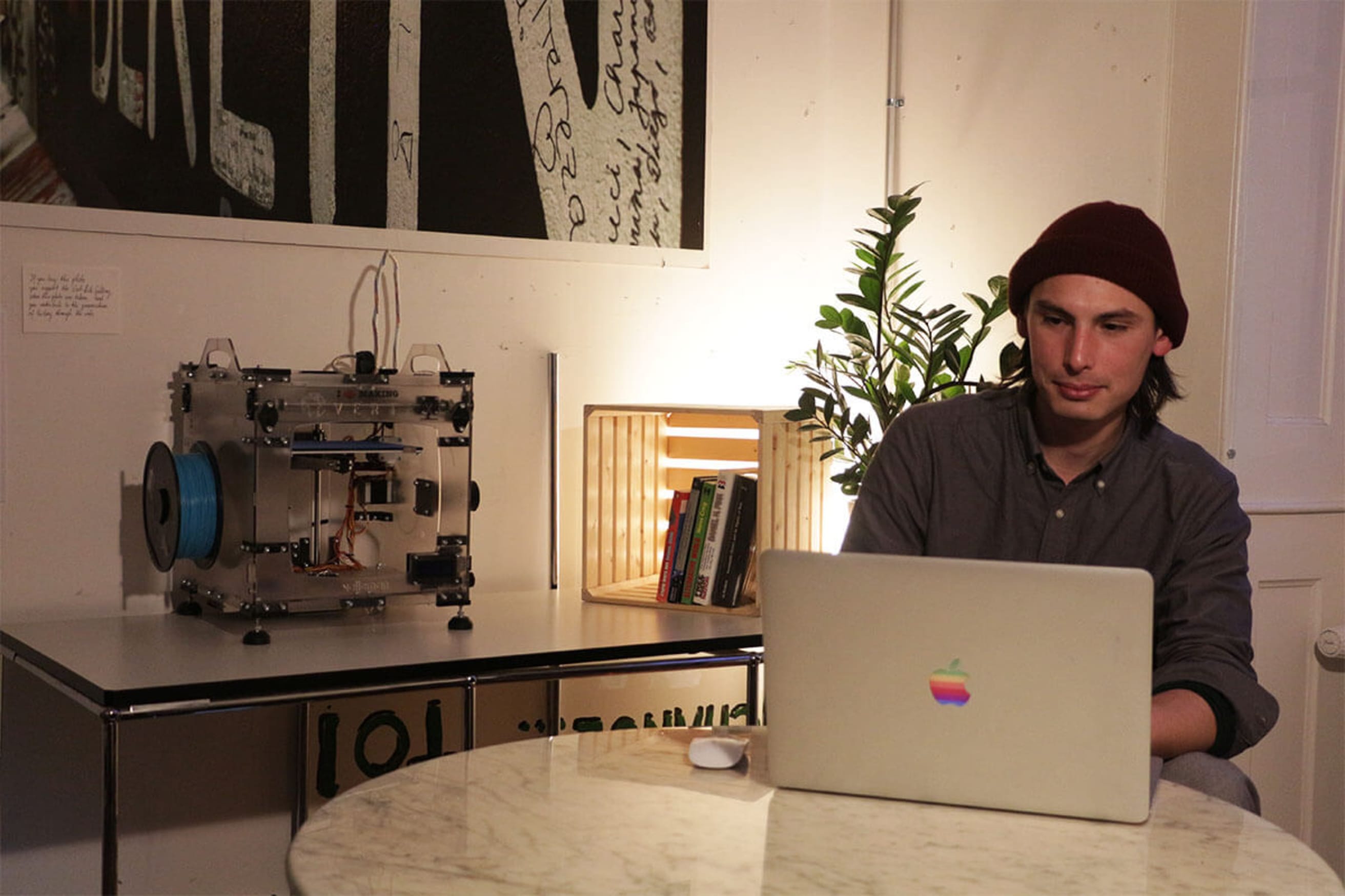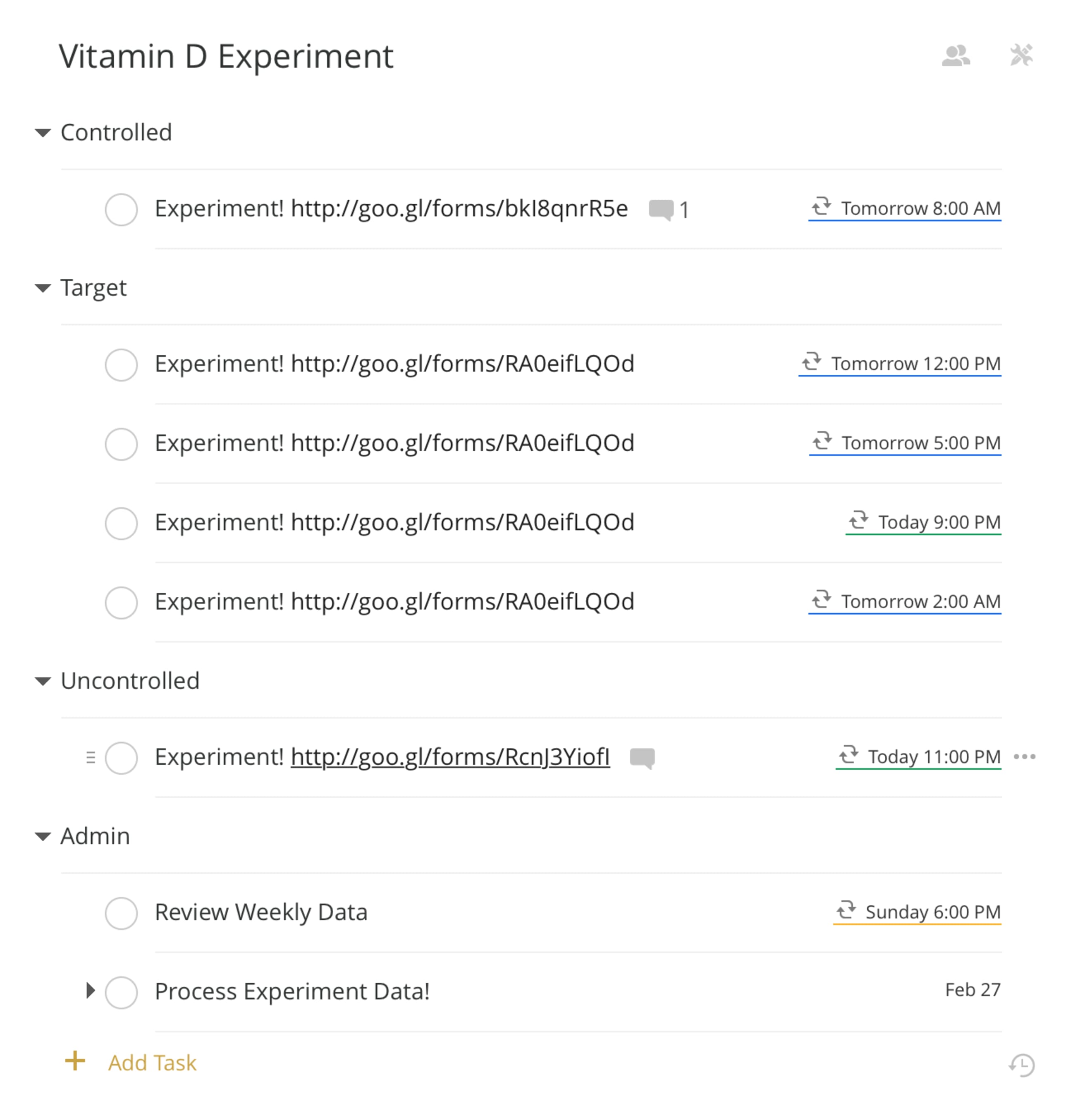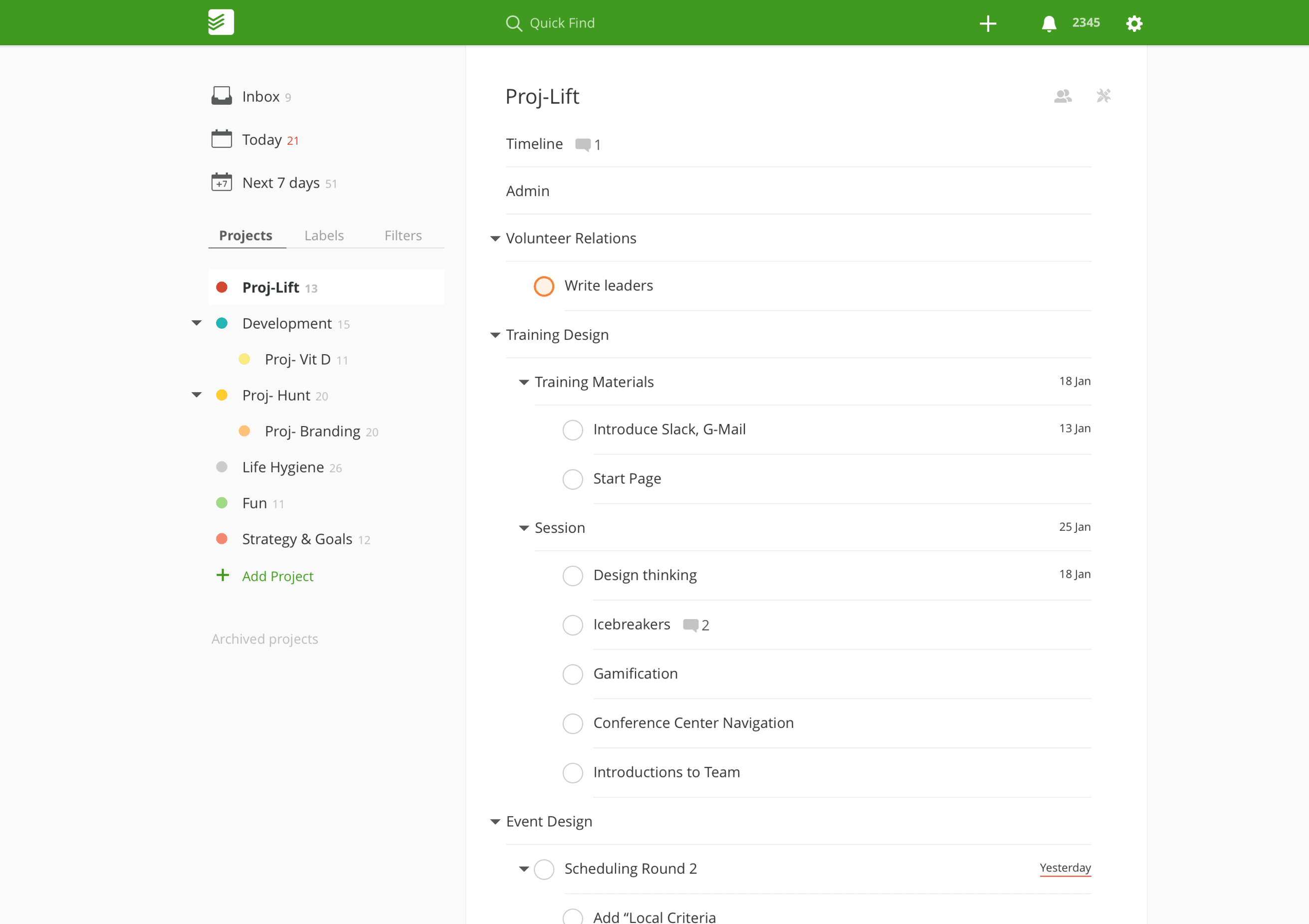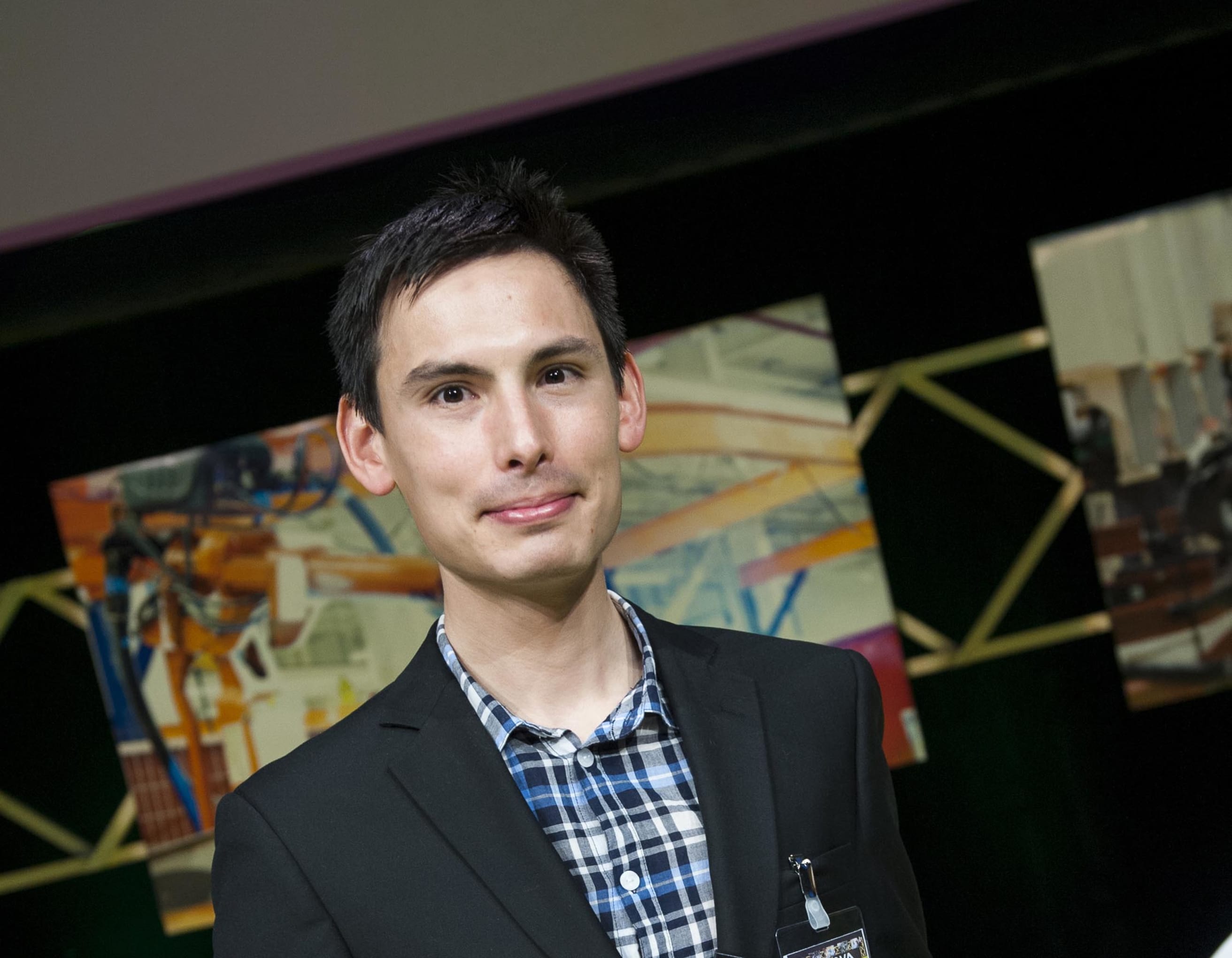In many ways, Jonathan Moy de Vitry is a poster child for the flexible Millennial workstyle.
Every day from 9 a.m. to 1 p.m., you’ll find him dodging around the streets of Geneva, Switzerland, as a part-time bicycle courier. He regularly covers 300 kilometers (186 miles) a week, making deliveries between the high-end Swiss watch makers and their suppliers.
In the afternoons and evenings, he puts his master's degree in innovation management to work as an independent consultant, helping companies adapt to a world of disruptive technology.
This varied work routine suits Jonathan just fine. He has never been able to focus on one thing for too long.
In addition to being a bike courier and innovation consultant, Jonathan happens to be one of millions of adults worldwide who lives with attention deficit hyperactivity disorder (ADHD).
Jonathan reached out to us with his story on how he has learned to control his symptoms and feel productive in spite of his diagnosis. His advice about organization and productivity is especially relevant to others with ADHD. But his hard-won insights are also helpful to anyone who wants to gain more focus and clarity in their work.
Learning to thrive with ADHD
Nearly 50 percent of children with ADHD continue to experience symptoms into adulthood. In the United States, an estimated 10 million adults—almost 5 percent of the country’s population—live with hyperactivity. They struggle paying attention, remembering, and prioritizing. Tasks that require focus, like managing time, personal finances, and office work, can be difficult.
“It’s like rebooting a computer,” Jonathan says, “I just completely forget what I’m doing.”
Yet, despite his diagnosis, Jonathan has found ways to thrive in his work. “Before I was diagnosed, I knew I had trouble concentrating, but once I was diagnosed I finally had a target to work against. It allowed me to start taking steps to manage it.”

In addition to medication, Jonathan credits two approaches in particular for his success:
- careful self-experimentation to discover what aspects of his routine contribute to or relieve his symptoms most
- a simple organizational system using Todoist to help him focus on the right things at the right time
A scientific approach to finding what works
Jonathan grew up in a scientific family. So, it didn't take long for him to take an analytical approach to managing his symptoms. “My dad is a biochemist who worked with the UN for quite a while, so we’ve always been passionate about science," he says.
After learning his diagnosis, Jonathan immediately set to work reading every article and scientific journal related to ADHD he could get his hands on. Then he began tracking his daily habits and symptoms to uncover the patterns of his ADHD. What made his symptoms worse? What habits helped him focus better? Says Jonathan:
Over the years I’ve read hundreds of scientific articles about hyperactivity, trying to figure out what the cause factors are. On one hand I try and manage the symptoms by looking at concrete things I can change in my life, things like taking supplements or going to bed at the same time. On the other hand, there are these soft skills, like to-do lists and managing things in a certain way, that make the symptoms more manageable too.
Excel spreadsheets have become his number one tool for figuring out what works for him. He logs his habits into detailed spreadsheets so he can later go back and analyze what changes helped him manage his symptoms. He tries to set up as close to experimental conditions as possible, only changing one aspect of his routine at a time in order to gauge its impact.
There are so many factors that affect how you function, and if you’re not taking in the most information possible, then you might be missing something that’s modulating your results.
Every day, he uses Todoist to keep track of aspects of his life such as sleep, eating habits, exercise, mood, and anything else in his daily routine that might have an impact on his ADHD symptoms. “It’s a lot of trial and error,” he says.
Jonathan was kind enough to share one of his templates with us. It is an updated version of what he used previously to test the effects of Vitamin D on his energy levels (“perceived mental fatigue”). He linked it up to a Google Forms-fueled spreadsheet with the following tasks:
1. Remind me to take the Vitamin D every morning. ("controlled variable")
2. Ask me to report hourly energy levels four times a day. ("target variable")
3. Ask me to record any other factors that could impact by energy levels besides Vitamin D. (“uncontrolled variables”)

Jonathan says the most significant discovery he has made so far from tracking his habits is the importance of exercise. "I noticed immediately that exercise made me feel much better, and it made me focus more," he says. "It was just such an enjoyable thing. I realized I should do more in order to improve my life."

He’s now incorporated exercise into his daily routine with his bike courier routes. He finds he’s better able to concentrate and get work done in the afternoon and evening after being outdoors on his bike each morning.
Throughout our conversation, Jonathan made clear that there's no silver bullet in managing ADHD. What worked for him may not work for everyone. "That's why experimentation is important," he says.
Tips for using Todoist to focus on the right things at the right time
Another key to productivity for Jonathan is having a simple, reliable system to stay organized. After trying out several apps and systems, he finally settled on Todoist:
I used four other to-do list apps before I came to Todoist, and none of them felt like a good fit. When I find a new tool that seems promising, I really use it to the max. The interface of Todoist feels like it was made by people who have done usability studies and who have looked into reasons why people don’t do tasks and then tried to build a program taking those reasons into account. It’s made up of a thousand little seamless features that make Todoist into an organic well-running creature.
Jonathan needed a task management system that would make organizing tasks and ideas as immediate and frictionless as possible. Through his trial-and-error experimentation, Jonathan settled into a personal workflow that helps him focus on the right things at the right time.
“These are some things I’ve discovered that are especially useful for people with hyperactivity and bad memory, and they can be used with any to-do list system,” Jonathan says.
Keep things simple
There are tons of great features and tools within Todoist that make the app great, but sometimes it’s best to keep things as simple as possible. Endless projects and labels can overcomplicate things and cause way too much wasted time. Get tasks into Todoist, and organize later if needed. That way nothing slips through the cracks while you take the time to organize.
Reinforce positive feedback
Structure your lists so that it becomes very satisfying to complete them. It can be really rewarding just checking off each task. Create lots of little tasks for each project, and make subtasks shorter so that you can check off more items as you go. This makes large tasks feel smaller and more manageable, and you can feel the progress you are making along the way.
Use templates when you can
Templates are really useful because if you have a bad memory, you can call up a template and you will be sure you aren’t forgetting anything. You can use a template and know you won’t miss any tasks for a particular recurring project. I have templates for weekend chores, administrative tasks, and anything that has tasks I can’t afford to miss.
Break tasks down
People with hyperactivity have a very hard time planning, so the more you can break things down into actionable steps the easier it is to get started. It’s a good tip for everyone, but it’s especially useful for people with hyperactivity because it can be very hard for us to get started on things. Breaking tasks down into sub-tasks is a great antidote to that.
Use the inbox first
Use the inbox when you’re taking tasks down. It’s easiest to throw everything into the inbox and then take the time to sort later. Instead of stopping, entering a task, and then entering all the details, enter them straight into the inbox. If you waste time assigning projects, etc. you're more likely to get distracted and forget what your task was to begin with.

How Jonathan organizes work and personal projects
Jonathan manages a small number of specific projects in Todoist so he doesn’t miss a step. These projects help break down the process of completing goals so they're easier to visualize and complete. Here’s how he says he organizes his work and personal projects:
Life hygiene
Everything that doesn’t require any thought, I have in a project that’s called "life hygiene." It’s made up of little things you do on a daily basis for general life upkeep. These are all the things you have to do that will get you in trouble if you forget to do them, like paying the bills and things like that. That way I don’t have to worry about remembering those little things.
Capacity building
This is made up of any kind of one-off thing I do to improve my skills or network. That could be taking an online course, going to a networking event, etc. I put things in here that don’t happen that often but relate to growing my personal skills.
Fun
I have fun ideas in this project. So if I want to take my girlfriend on a date, I don’t have to think long about what to do. I have a stockpile right in this project of things to access that are fun to do.
Long-term plans and goals
In this project, I write down everything I want to change on a larger scale and I’ll have it send me alerts every month or so to see if I’m sticking to the plan. I keep things in here that I don’t need to see on a daily basis. I just need to see them as a reminder from time to time. For example, there is a recurring task for practicing German that will show up every month or so. It's a little jab in ribs to remind me that I have to get back to it.
Clients
I create a project for every client I'm working with so I never mix things up between them. I also sometimes share this list with clients so they can track the progress of a project.
In the end, Jonathan's productivity advice boils down to two things. First, care for yourself and your physical health. Find out what habits you practice on your best days, and prioritize them every day. Productivity doesn't just happen at work. Be mindful of the other factors in your that impact your energy and focus.
The second is to get distracting thoughts and to-dos out of your head and into a simple system. It doesn't need to be sophisticated and employ every feature available. It just needs to be reliable. The systems that stick are simple enough that they don't take extra effort to maintain.
In a world with a million things vying for limited attention, we could all use a little more focus. Jonathan's story inspired us and hopefully you as well. Learn more about Jonathan on his website.

